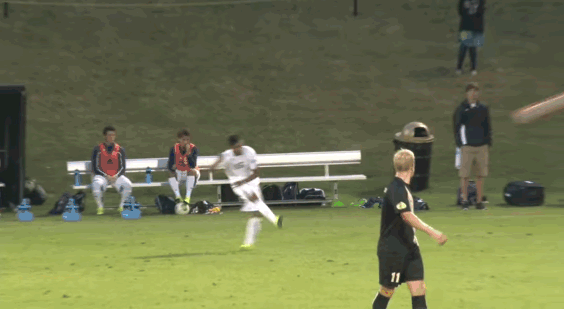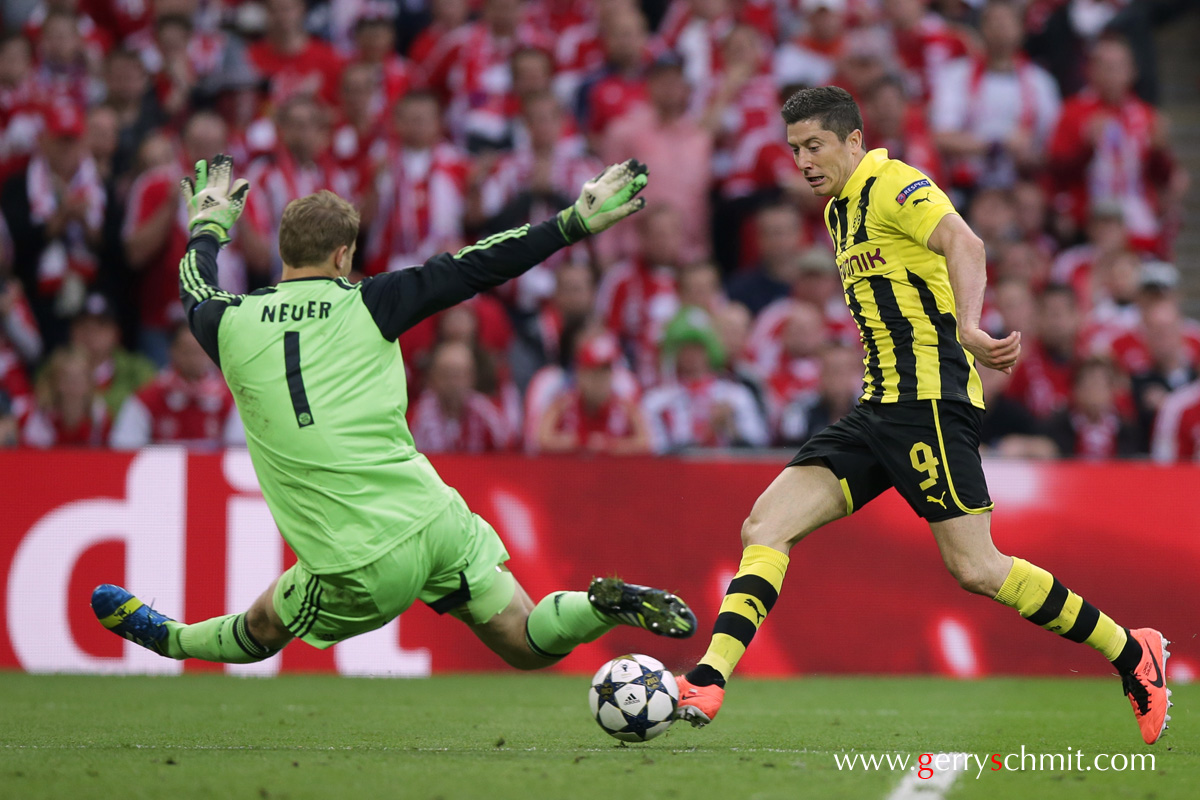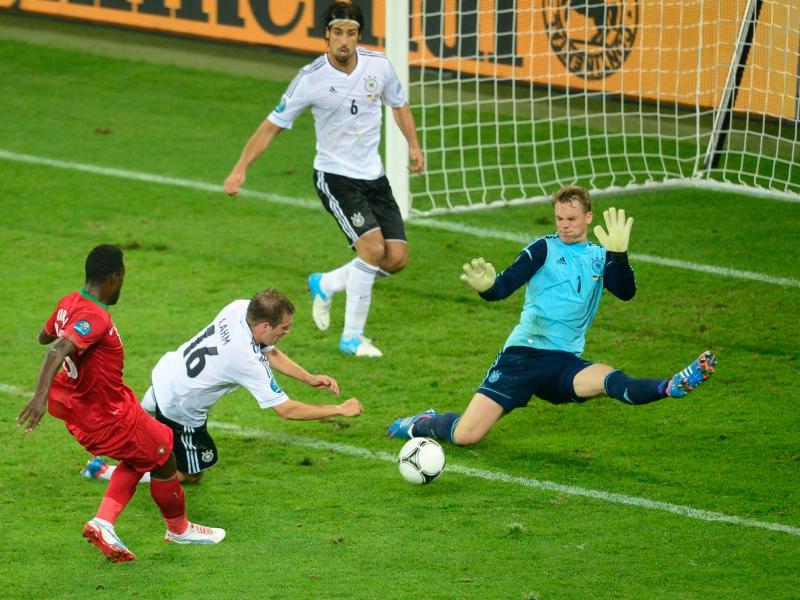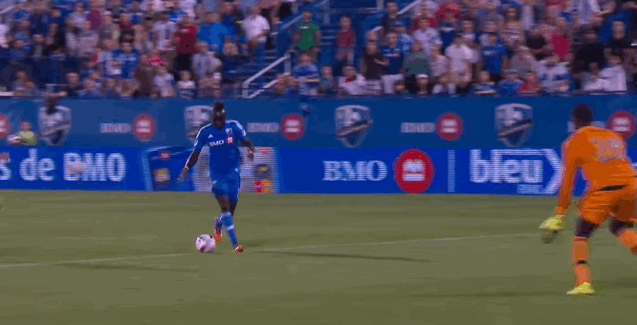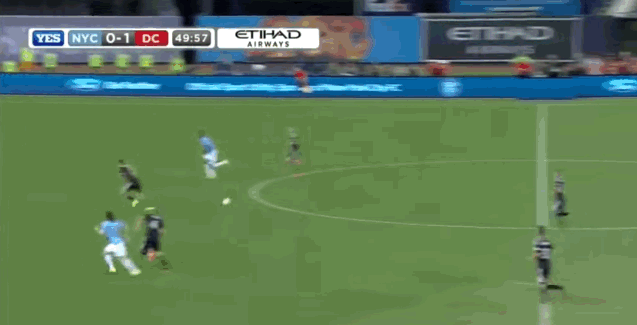The US Olympic qualifying roster was released this past weekend and the notable omission is Jon Kempin, who topped my list back in June as the most likely goalie to make the team. Sporting Kansas City has taken their time with the youngster, giving him few starts over the past couple years, but there's no denying the talent. Last year he came off the bench with a resounding "hello" and just recently he posted this save for MLS SOTW contention. Needless to say, the lack of his name on the roster was odd to see, especially given the three that were chosen.
Zack Steffen / Photo: Icon Sportswire via AP Images
In November, the U23s will kick off their Olympic qualifying run with Zack Steffen, Ethan Horvath, and Charlie Horton. On paper, the choices seem fine and with the reputation that America has for producing goalkeepers, it's second nature to assume every goalkeeper associated with any USYNT will become a starter in MLS someday. However, it's interesting that the goalkeepers for the qualifying roster include three goalkeepers whose average age is under 21. For a U23 competition and a country renowned for their goalkeepers, are there no goalkeepers a few years older that were better options? Admittedly, there is some expectation for Horvath and Steffen to compete for the starting spot in 2022 but even still, a player playing up two years is not an easy task. A closer look makes the decisions a little less confounding.
Ethan Horvath / Photo: Dean Mouhtaropoulos/Getty Images Europe
Meet the Cast
Charlie Horton (left) training with Leeds
Assumed starter Zack Steffen will be remembered for his penalty-saving-summer during his time with the U20s. Save after save, he pushed the US to the edge, where they lost in a shootout to eventual winner. That said, Steffen is not without his faults. Despite his physique, he has struggled in the air. (Even Steffen's previous backup, Santiago Castano, had his troubles with aerial service, which starts to become less of a player's issue and more of a coach's.) The opening goal against Myanmar in the U20 WC was less than ideal and recently, with SC Freiburg II, Steffen essentially gifts an own goal on a simple cross (watch the play at 10:25). Giving up nine goals in four games in fourth division Germany isn't quite what fans are expecting from for their U23 starter.
Moving to Ethan Horvath, there is good reason to be excited for the Colorado native, who has started in Europa League matches before turning twenty-one. It's easy to project that if he is this good now, then perhaps he could start for the USMNT in 2022, if not 2018. However, he's still under 25 career starts with the toughest opponent being... Croatia's Dinamo Zagreb? While he has the most first team experience of the three goalkeepers, patience is required for any heralding for a goalkeeper who will likely not even start during qualifying.
Last man in, Charlie Horton, has never had a professional start in his life and is easily the biggest head scratcher. His inclusion really begs the question, "Would he even be in the discussion if he wasn't playing overseas?" U23 Europe-based camps saw him, Tyler Miller, and Cody Cropper get time with the U23s but watching Horton play, he doesn't standout in any recognizable way over his peers. After already being dropped by an English club twice, he's shown determination by landing with Leeds this summer but the lack of playing time and quick club movements are worrying.
The issues range for the three goalkeepers but a bigger problem lies hidden with USYNT's approach to selecting goalkeepers.
All-Time USYNT Goalkeeper List
Looking back at previous USYNT goalkeepers, the track record gets a lot less exciting once we move past the centennial-capped goalkeepers. Sure, there's Howard, Keller, and Meola but after that the standout goalkeepers become sparse, if not completely unrecognizable.
(Since there's no extensive list, I searched for each USYNT goalkeeper over the course of a week. Please let me know of any errors or missing goalkeepers.)
Year - Name - Years Involved - Professional Appearances - Time with USMNT
Since 1980, only 379 of 556 caps (68%) for the senior team's goalkeepers have come from USYNT-raised goalkeepers. Obviously the stat is heavily dominated by Howard, Keller and Meola so it's no surprise that only nine of those thirty goalkeepers spent any amount of time with a youth team, while the other 21 goalkeepers had no experience at all. There are late bloomers and several reasons why a goalkeeper can arrive on the scene late. However, when less than a third of your senior goalkeepers went through your program specifically designed to get players to the national team, the youth program is clearly not doing its job.
Digging further, of all the goalkeepers that have spent time with a US youth team, a quarter of them never reached a topflight league. Another quarter are ending their professional career with less than 50 appearances, a low amount considering teams can easily play 20 games a season, even in the 80s. Half of the "best" youth goalkeepers the US has to offer are failing to become successful professionals when others are taking their positions from them later down the line.
If the U20 or U17s were to search out more quality goalkeepers, we would see a "rising tide" effect that pushes all players to a higher level. Each age group is only seeing about eight different goalkeepers each cycle, around four for each age year. After spending five years with the U17s and U20s, it would make sense to regularly bring in other top goalkeepers from around the country to push the group forward instead of letting complacency set in. As of right now, 70% of our senior goalkeepers are expected to develop outside of the USYNT. We know there are hidden gems and in 2015, finding them is at an all-time ease.
“As of right now, 70% of our senior goalkeepers are expected to develop outside of the USYNT. We know there are hidden gems and in 2015, finding them is at an all-time ease.”
To be fair to Andi Herzog, the coach for the U23s, he did call a camp for players on the fringe but somehow there was a feeling that it was more a formality instead of a chance to really look at some dark horses. The four goalkeepers called in, Wade Hamilton (Cal Poly), Jonathan Klinsmann (Cal), Kendall McIntosh (Santa Clara), and Andrew Tarbell (Clemson), are all respectable goalkeepers in their own right but multiple questions are raised when looking at the selections. Only Tarbell didn't have USYNT experience before the camp, which hits the point home again of just how exclusive the group is. There 200+ D1 men's soccer programs and there aren't any other goalkeepers without USYNT ties out there worth giving a shot? Additionally, none of the goalkeepers are over 21. Is the '93 group of goalkeepers really that weak? Moving down the list, Klinsmann's name is a shock to see. The connection to his father, a head coach of a nearby senior team, wouldn't raise some ethical concerns if Jonathan was at least starting for his university, which the eighteen year old is not. If there is a better goalkeeper out there, Senior Alex Mangels, surely it would make more sense to call him in instead. Lastly, for anyone who has followed Kendall McIntosh's career at Santa Clara, "mixed" would be an appropriate review for the goalkeeper who has largely relied on his physical strength rather than technique. But yet again, the USYNT badge has trumped merit. These are four good goalies but the selections made this exercise look more like a formality instead of a real test to see who could move up the depth chart.
No Intent to Change
After seeing the U23 American roster, an anonymous Canadian remarked, "I can only imagine the field day you'll have if one of them pulls a Sean Johnson." Unfortunately, it doesn't matter what any USYNT goalkeeper does. Regardless of the number of mistakes they commit, the youth national teams will pick familiarity over talent. Heck, I was able to write an entire paragraph of just listing blunders made by Cody Cropper and he was the expected U23 starter before he hurt his knee. (Here's another freebie that didn't make the list.) Cropper has shown improvement over the years and there is the expectation to become an established professional, but there is no need to let mediocrity be rewarded for the sake of consistency. Austin's Devin Perales has looked great for the Aztex and the college game has multiple goalkeepers that are worthy of honest looks, Zach Bennett (Michigan State), Paul Blanchette (Loyola Marymount), and Eric Klenofsky (Monmouth), to name a few.
There is always dirt on any goalkeeper to dig up. It's not impossible to go back and find a weak goal conceded or a poor stretch of games on any goalkeeper. The issue here is less about the quality of the current three goalkeepers on the Olympic roster and more about how the USYNT goalkeeper position is essentially an exclusive club that is incapable of giving outsiders a fair shake at cracking the roster. All three goalkeepers on the roster should become established professionals, which is the expectation that comes from being on a USYNT. However, USYNT's track record with goalkeepers is blown out of proportion and can be classified as "unsuccessful" in more than one way. Regularly giving a shot to other goalkeepers will either reveal hidden talent or make the current starters even better. Within a country that has been hounded for not spreading their talent search wider for thirty years now, the USYNT is still content with maintaining the status quo.




